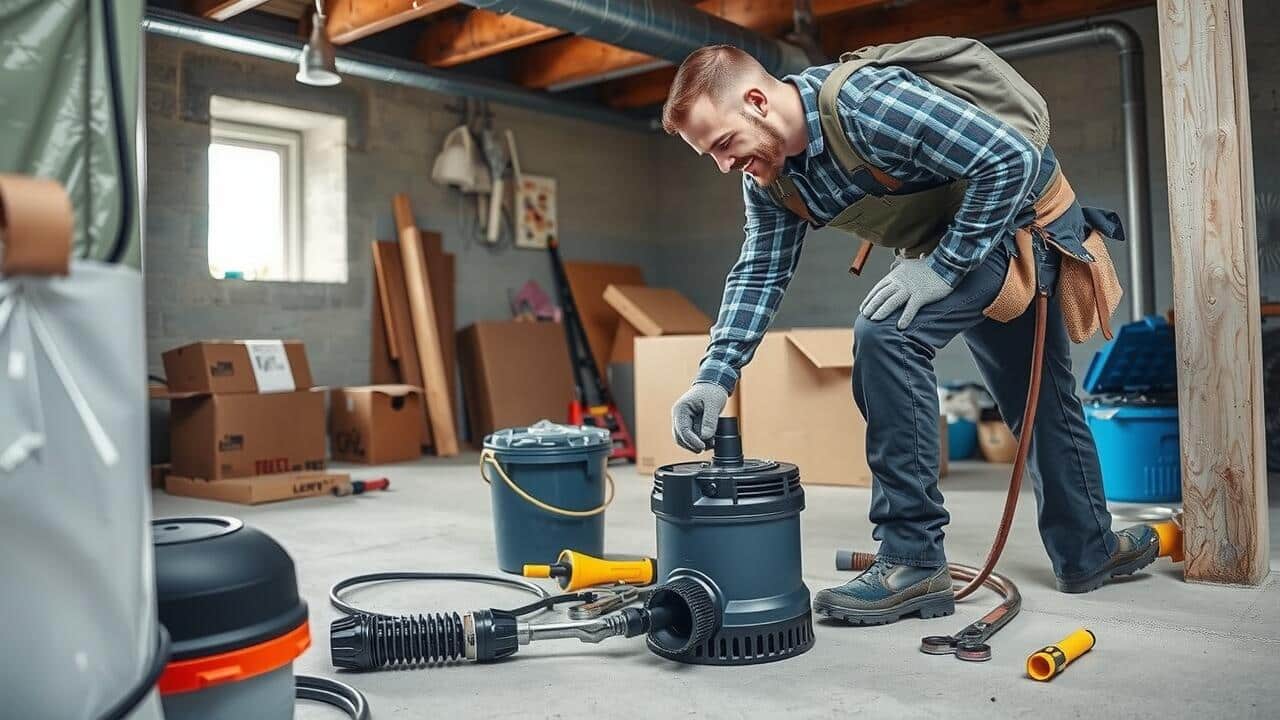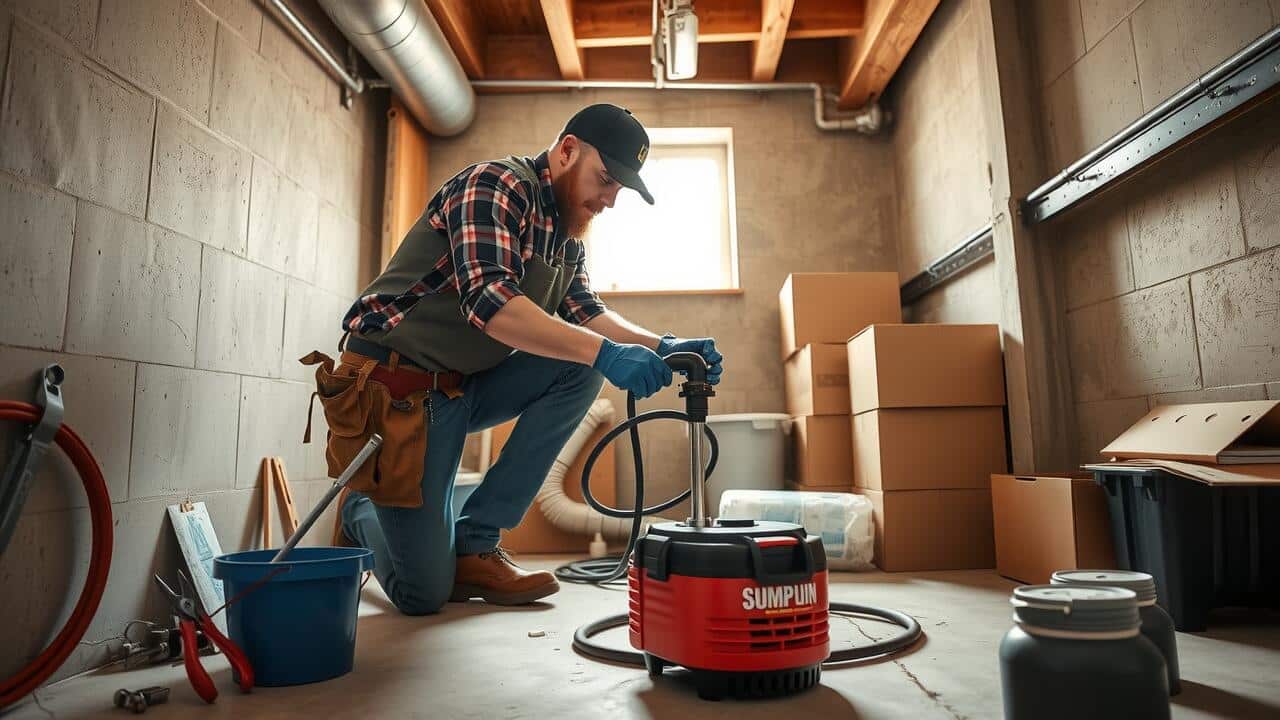
Table Of Contents
Common Mistakes in Sump Pump Installation
One significant mistake in sump pump installation involves improper depth measurements. Many homeowners underestimate the importance of placing the pump at the correct depth within the sump pit. If the pump is too shallow, it may fail to effectively manage excess water. This could lead to water pooling in the basement or crawl space, creating potential damage or mold growth. When searching for “sump pump installation near me,” it’s essential to prioritize contractors who understand local water table conditions and can ensure proper depth for optimal performance.
Another common error is neglecting to check the surrounding drainage systems. Installed improperly, a sump pump can struggle if the perimeter drain is not functioning efficiently. Clogged drains can prevent water from reaching the pump, rendering it ineffective. Before finalizing any installation, assess the entire drainage setup to avoid costly repairs later. Thorough inspections and careful planning during the installation phase can save homeowners unexpected troubles.
Overlooking Depth Measurements
One of the most common mistakes during sump pump installation is overlooking the depth measurements. Many homeowners may underestimate the importance of properly gauging how deep the sump pit should be. A pit that is too shallow may not perform effectively, leading to inadequate water removal during heavy rainstorms. Ensuring the right depth helps the pump work optimally, reducing the risk of flooding in basements and crawl spaces.
Failing to measure the depth can result in costly consequences down the line. When searching for “Sump Pump Installation near me,” it is crucial to emphasize the significance of depth to local contractors. They can provide guidance on the correct specifications for your home’s unique needs. By communicating your concerns effectively, you help ensure the installation process adheres to best practices that can prevent future water issues.
Maintenance Tips for Sump Pumps
Regular maintenance is essential for ensuring that a sump pump operates effectively. One of the key tasks involves checking the pump’s depth and functionality. Ensure the pump sits at the correct depth, typically below the water table. This ensures efficient water removal during heavy rains or flooding. Inspect the pump and discharge pipe for any signs of blockage. Look for debris or sediment that may prevent proper operation.
Finding a reliable service for sump pump installation near me can aid in keeping your system in optimal condition. Schedule routine check-ups to identify potential problems before they escalate. Consider testing the pump by pouring water into the sump pit to ensure it activates properly. Keeping a maintenance log can help track performance issues and service dates, ultimately extending the lifespan of your sump pump.
Checking Depth and Functionality Regularly
Regularly checking the depth of your sump pump is essential to ensure optimal performance. Over time, sediment and debris can accumulate in the sump pit, affecting how deeply the pump operates. A sump pump that is too shallow may not effectively manage water levels, leading to potential flooding or water damage in your home. It’s advisable to schedule periodic inspections, especially in regions prone to heavy rainfall or flooding.
Functionality checks should also be a part of your maintenance routine. Testing the pump by pouring water into the pit can confirm if it activates and operates as it should. If you notice deficiencies in how the pump engages, it may be time to reference services for “Sump Pump Installation near me” to address any underlying issues or make necessary adjustments. Continuous monitoring helps ensure that your sump pump remains a reliable defense against unwanted water intrusion.
Signs Your Sump Pump May Be Too Shallow
A sump pump that is installed too shallow can lead to several noticeable issues. Homeowners may observe consistent dampness in their basements even during dry weather. This can indicate that the pump is not positioned correctly to catch excess groundwater. Regular pooling of water in areas surrounding the pump can also signal that it isn’t effective in diverting water away from the home’s foundation.
In addition to visible water accumulation, a sump pump that operates in a shallow basin may run more frequently than necessary. This overactivity can lead to premature wear and increased electricity costs. It is essential for those considering new installations or maintenance to search for “Sump Pump Installation near me” to ensure proper depth and functionality. Keeping the pump at the right depth enhances its efficiency and minimizes the risk of water damage.
Indicators of Ineffective Water Management
Inadequate depth settings can lead to significant issues in water management. If your sump pump is installed too shallowly, it may struggle to handle rising groundwater levels effectively. This can result in water pooling around your foundation, increasing the risk of flooding and potential damage. Regularly observing the performance of your sump pump can highlight these issues early on, allowing for timely interventions before they escalate.
Another indicator of ineffective water management is the frequency of water accumulation in the sump pit. If you find that the pump is cycling on and off excessively even during mild rain, this could point to a depth issue. Residents searching for “Sump Pump Installation near me” often overlook the importance of proper depth settings in their installations. Ensuring the sump pump is appropriately positioned can significantly enhance its ability to manage water flow and protect your property.
FAQS
How deep should a sump pump be installed?
A sump pump should typically be installed at least 22 inches deep to ensure it effectively collects and removes water from the sump basin. However, the specific depth may vary based on local building codes and the water table in your area.
What are some common mistakes made during sump pump installation?
Common mistakes include overlooking depth measurements, failing to secure the pump properly, and not considering the drainage needs of your property. It’s essential to follow guidelines to avoid these pitfalls.
How often should I check the depth and functionality of my sump pump?
It’s recommended to check the depth and functionality of your sump pump at least once every three to six months. Regular maintenance ensures the pump operates correctly during heavy rainfall or flooding.
What signs indicate that my sump pump may be too shallow?
Signs that your sump pump may be too shallow include frequent cycling, water pooling around the pump, and the inability to keep up with heavy rainfall. If you notice these issues, it may be time to reassess the installation depth.
Can I adjust the depth of my sump pump after installation?
Yes, you can adjust the depth of your sump pump after installation, but it may require reinstallation. It’s best to consult a professional to ensure the pump is set to the appropriate depth for optimal performance.
